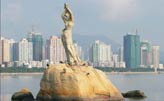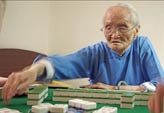Cover Story
Questions remain over safety of bottled water
Updated: 2011-08-16 07:55
By Wu Wencong (China Daily)
The source
He started, logically, at the water source. Most of the water, especially mineral water, comes from the aquifer deep underground. When pollution occurs in nearby, contaminants can easily sink into the groundwater.
"I saw it with my own eyes in Jiangxi province, where local people raise ducks and do their washing up near a water source," Li said.
In addition to sources of ordinary water, about 3,000 sources for mineral water in China are considered qualified, meaning they meet certain standards for the level of minerals in the water, or did at the time they were certified.
After that, he said, few follow-up checks are conducted. "Authorities pay most attention to the finished products."
The water is then pumped into the production line, which is supposed to precipitate the sediment and purify the water. However, Li said, "Pipelines and the filtration system need backwashing and cleaning on a regular basis. Otherwise the disinfection process itself will become a contamination process."
Beyond regular spot-checks by authorities, the drinking water industry relies heavily on checks by the factories themselves. This usually occurs after the water has been bottled and before it is shipped, Li said.
"No companies, big or small, can guarantee that all of their products meet quality standards. That's why the self-check mechanism is a must," he said. "If it exists only in name, as in many cases I know about, there will be higher possibilities for substandard products to reach customers."
The containers
Then there is the quality of the containers. Standards for individual-size water bottles are lower because those bottles are not reused. But the big jugs, usually holding 18.9 liters, are usually reused about 40 times each.
These bottles are supposed to be made of food-grade polycarbonate. Statistics released by the China National Health Association drinking healthy committee indicate the annual nationwide output is about 15 million; demand exceeds 20 million.
Li said it is no secret in the industry that about half of these large bottles do not meet appropriate standards.
While doing research in Hebei province, Li said, he saw workers from small illegal workhouses smash waste DVDs and small plastic bottles into granules and sell them to factories that make the big water bottles.
"Water is contaminated if it is kept in vessels like this. People may feel a stomachache or get dizzy if they drink this water for a long time," Li said.
"Price competition is hot in the industry, and the bottles account for the biggest portion of the total cost." Li said bottles that meet standards cost at least 30 yuan.
Forged bottles are hard to identify, Li said, even by professionals.
If you lift a standard bottle and a substandard one together against the sun, he said, it's clear that the "good" bottle is a transparent light blue, with no impurities. The substandard bottle is darker and rougher, with low transparency and more scratches.
When such a comparison isn't possible, Li said, it's hard to make a distinction.

Specials

Jewel of the south
Zhuhai in South China has a wealth of natural allure that is open for business.

China in vogue
How Country captured the fascination of the world's most powerful fashion player

More than just a game
Mahjong is a deep-rooted cultural tradition that touches every level of society
![Workers clean empty bottles before filling them with purified water at Beijing Kangtai Gaoke Co. Experts suggest choosing a relatively reliable brand to lower the risk of drinking contaminated water. [Zhang Tao / China Daily] Questions remain over safety of bottled water](../../attachement/jpg/site1/20110816/0013729e48090fb3f33109.jpg)